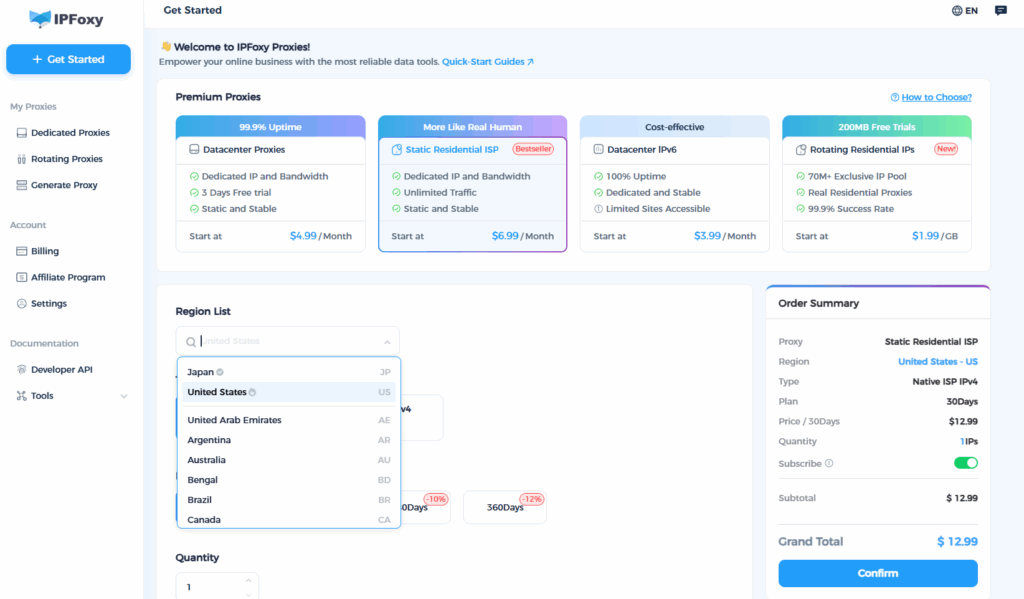As one of the world’s most popular short video and e-commerce platforms, TikTok offers huge traffic opportunities. However, for new stores, the cold start phase is full of risks. Many sellers encounter embarrassing issues right from the beginning, such as zero exposure, sudden account suspensions, or limited traffic. The root cause often isn’t the product itself, but rather poor handling of the environment, operations, and content strategies during the cold start phase.
This article summarizes common pitfalls of TikTok cold starts and provides practical strategies to help new sellers avoid zero exposure and account suspension.
I. Common Pitfalls in TikTok Cold Start
- Zero Exposure
Videos barely get any views, often stuck at single digits. Causes include low account weight, unclear positioning, poor content quality, or abnormal IP environment. - Traffic Limitation or Downgrade
Videos initially gain traffic but suddenly lose recommendation. This usually happens due to repetitive content, low engagement, or suspicious account activity. - Account Suspension
Logins are blocked, or violation warnings appear. Common reasons include multiple accounts sharing the same IP/device, leading to association, or suspicious actions like bot-driven boosting. - Frequent Content Rejections
Videos fail to pass review, or product links are removed. This typically results from using copyrighted music, sensitive content, or overly promotional material. - Stagnant Growth
Even with regular posting, traffic doesn’t improve. Often caused by skipping account nurturing or inconsistent content style, making it hard for algorithms to identify account positioning.
In short, most new sellers fall into three traps: unclean environment, rushing operations, and unclear content strategy.

II. Practical Guide to Avoid Zero Exposure and Suspension
1. Build a Solid Environment Foundation
During the cold start, IP and account environment are critical variables that directly affect exposure and account health.
- Clean and Stable IP/Network
Avoid free proxies or public nodes, as they are easily flagged as abnormal, leading to limited traffic or suspension. For cross-region operations, use residential IPs for stability and authenticity. We recommend IPFoxy, a high-quality proxy provider offering residential and static dedicated IPs. These allow sellers to simulate real user environments and avoid detection when using cheap datacenter IPs. IPFoxy also supports fingerprint browsers and multi-account management tools, making it suitable for account matrices or cross-border operations. Whether in the account nurturing stage or when scaling up, IPFoxy ensures a cleaner and more stable environment, reducing risks from IP association or network anomalies. - Device and Fingerprint Isolation
Do not run multiple accounts on the same device. Use fingerprint browsers to simulate unique environments, keeping system, timezone, and language consistent with the target market. - Account Registration & Nurturing
Don’t rush into posting right after registration. Spend a few days performing normal user actions like watching videos, liking, and commenting. Gradually increase activity to build trust, instead of triggering platform suspicion with sudden large-scale actions.

2. Content Strategy: Differentiation and Engagement
Even with a safe environment, poor content will fail to gain traction.
- Consistent Positioning
New stores should focus on one niche or audience. Keep video themes consistent so the algorithm quickly understands what your account is about. - High-Quality Content
Avoid mass-reposted or repetitive videos. Combine product demos, usage scenarios, and real-person appearances to add emotion and storytelling. Trends and popular music can be used, but add originality. - Encourage Engagement
Add prompts like “What do you think? Leave a comment” to boost interaction rates. Reply to comments actively to increase account activity signals. - Stay Compliant
Don’t use unauthorized music, sensitive items, or overly aggressive promotions. Compliance ensures long-term growth without interruptions.
3. Supporting Tactics for Promotion and Traffic
Don’t rely solely on algorithmic pushes. Strategic boosting can accelerate the cold start.
- Creator Collaborations
Partner with mid-level influencers for reviews or product promotions. Avoid jumping straight to large creators, which are costly and riskier. - Advertising
Use Spark Ads or in-feed ads for initial exposure. Keep the budget moderate and ensure ad content matches organic video style. - Multi-Account Matrix
With safe environments, you can run multiple accounts interacting with each other to boost engagement signals. Always use professional proxies like IPFoxy and fingerprint browsers for strict isolation to prevent account linkage.
4. Monitoring and Adjustments
Cold start is not a one-time effort but a continuous optimization process.
- Check metrics daily: views, engagement, and account health.
- Scale up high-performing videos and adjust or drop underperforming ones.
- If traffic drops, reduce posting frequency and return to account nurturing instead of forcing heavy output.
- Regularly audit IP and devices to ensure no abnormal logins or fingerprint leaks.
Conclusion
The main reasons TikTok cold starts fail are weak environments, poor content, and rushed operations. Cold start success doesn’t come overnight—it requires steady and strategic execution.
To avoid zero exposure and suspension:
- Use clean, stable IP environments (e.g., IPFoxy).
- Nurture accounts gradually with natural user behavior.
- Keep content positioning consistent, with differentiation and engagement.
- Supplement with influencer collaborations and moderate ads.
- Continuously monitor and adjust strategies.
By steering clear of common pitfalls and building a strong foundation, new TikTok stores can secure stable long-term traffic and growth.


